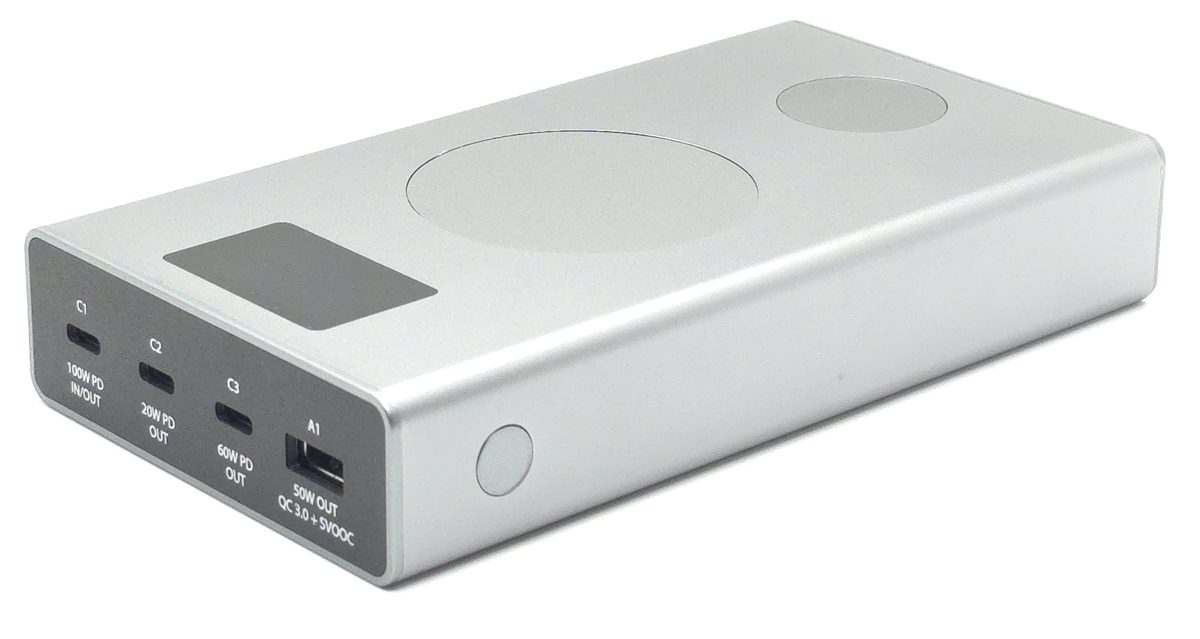
REVIEW – I travel a lot. I carry a lot of stuff. Chargers, battery packs, cables – all the junk I need to be able to power all the doo-dads I travel with. Being able to power an electron-hungry laptop is critical for me as I regularly do some battery-consuming laptop work while I sit at a bar doing a little consuming of my own. Finding a battery pack that can juice up my laptop has been a challenge – especially one with enough power while remaining travel-friendly in terms of size, weight, and maximum allowable Watt-hour storage so the airlines don’t go ballistic. I recently tested the Zeus travel charger from Chargeasap and was pretty impressed so when the chance to check out their new Flash Pro Plus power back landed in my lap, I jumped at it. I think I have a new travel battery.
What is it?
The Chargeasap Flash Pro Plus is a portable battery pack. It packs 25,000mAh and 92.5Wh of power in a small and easy-to-carry package. By staying under 100Wh, it is airline-friendly and can be packed in carry-on luggage. It can crank out up to 190W across all output methods.
What’s included?
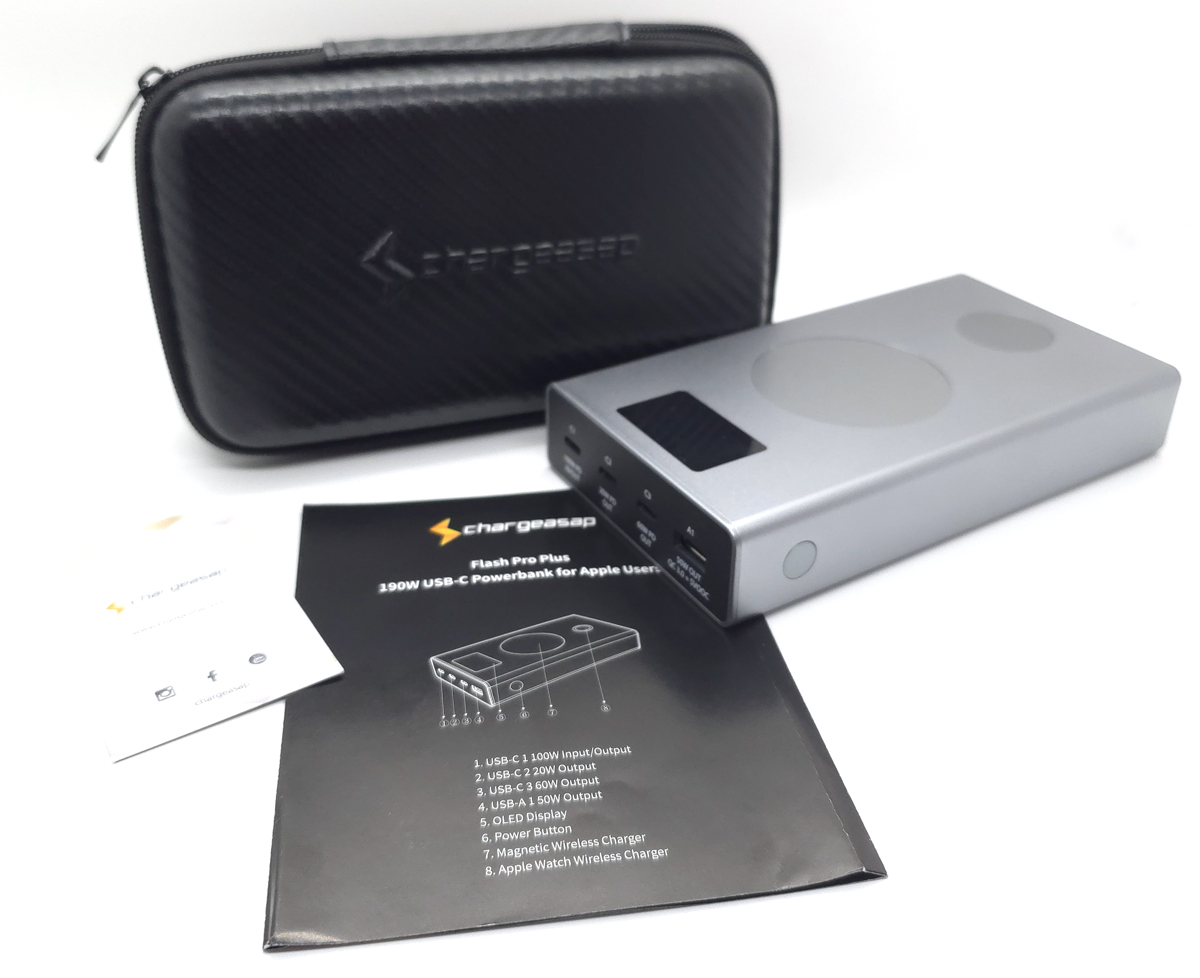
- Power bank
- Carry case
- Manual
- Thank you card
Tech specs
Click to expand
Dimensions: 15.85 x 8.7 x 2.85mm (6.24″ x 3.4″ x 1.12″)
Weight: 583.5g (1.28lb)
Capacity: 25000mAh / 92.5Wh
100W USB-C Power Delivery 3.0 Input: 5V/3A, 9V/3A, 12V/3A, 15V/3A, 20V/3A, 20V/5A (PPS: 3.3-6V/5A, 3.3-11V/5A)
100W USB-C Power Delivery 3.0 Output: 5V/3A, 9V/3A, 12V/3A, 15V/3A, 20V/3A, 20V/5A (PPS: 3.3-6V/5A, 3.3-11V/5A)
60W USB-C Power Delivery 3.0 Output: 5V/3A, 9V/3A, 12V/3A, 15V/3A, 20V/3A (PPS: 3.3-6V/5A, 3.3-11V/5A)
20W USB-C Power Delivery 3.0 Output: 5V/3A, 9V/2.22A, 12V/1.67A (PPS: 5-5.9V/3A, 5-11V/2A)
50W USB-A 1 Output: QC3.0 + SVOOC 4.5V~10V/5A, 11V/4.5A, 12V/4.16A
Magnetic Wireless Charger Output: 15W Fast Charge (10W for Android and non-iPhone 12 devices)
Apple Watch Wireless Output: 5W
Maximum Power Output: 190W
Maximum Power Input: 100W
Batteries: 5 x 21700 Panasonic™ Lithium Polymer Graphene Composite Battery Cells
Battery Life Cycles: 2,000, 4 times more than Li-Po batteries
Battery Life: 5 Years
Time to 80% (20,000mAh) from empty: 45 min
Time to full charge from empty: 1 hr 10 min (with 100W input)
DC/DC Input Efficiency: 90%~95% (100W input)
Pass-through charging: Yes
Output Efficiency: 70% ± 5%
Discharge Rate: 12mAh per day over 395 days
Device Operating Temperature: -20℃ to 60℃
Safety Protection: Over current/voltage/temperature, short circuit protection
Enclosure: Aircraft-grade Aluminium and PVC
Power Distribution – 190W max across all ports/pads
C1=100W
C1+C2= 100W + 20W
C1+C2+C3= 100W + 20W + 60W
C1+C2+C3+A1= 60W + 20W + 45W + 50W
C1+C2+C3+A1+ iPhone wireless= 60W + 20W + 45W + 50W + 15W
C1+C2+C3+A1+ iPhone wireless+Apple watch wireless= 60W + 20W + 45W + 50W + 15W + 5W
Design and features
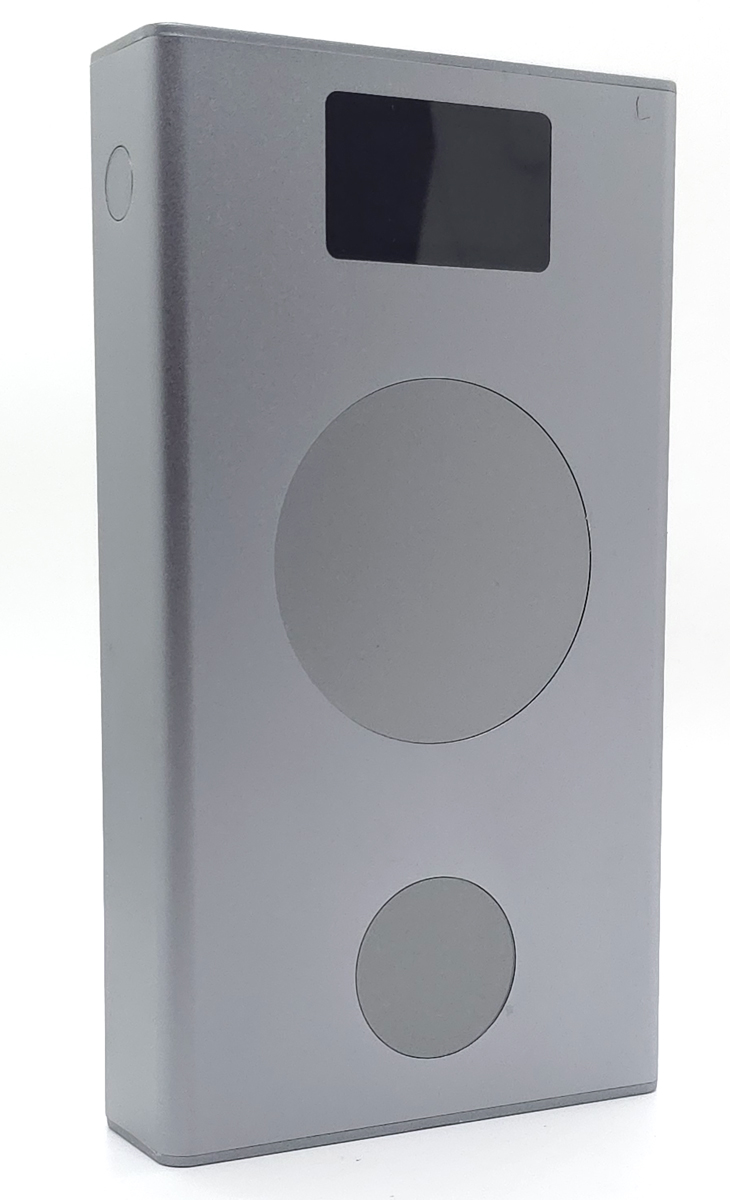
The design is fairly standard for power banks. The notable differences are the nice display, wireless MagSafe charging pad, and Apple Watch charging pad.
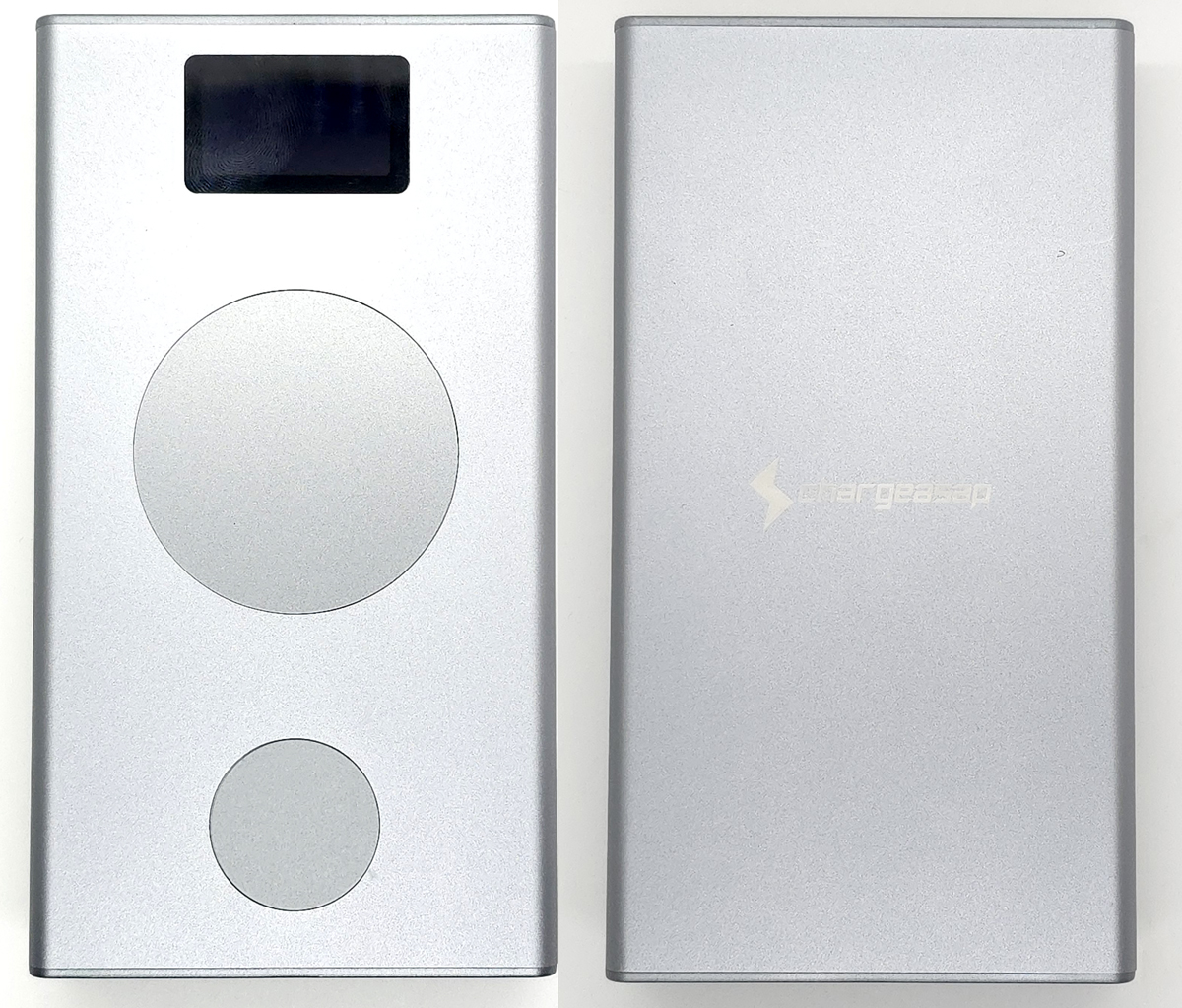
The front of the pack holds the display and the wireless pads. The back has the logo.

There is a power button on the side. The pack powers up automatically when you plug something in, but if you want to check the charge level, you can turn the display on with a push of the button.
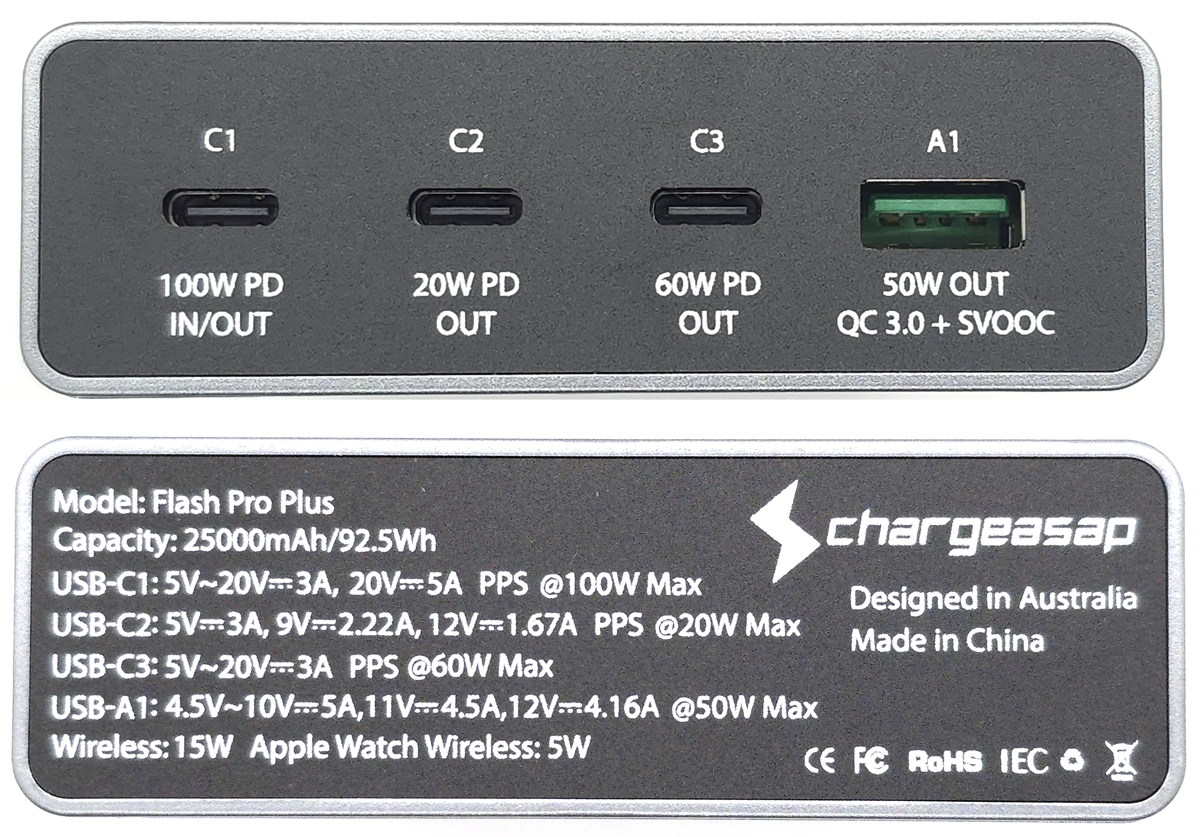
The two ends hold all the nicely labeled charging ports and the technical data. The C1 port doubles as a charging port for devices and the input charging port to charge the power bank.
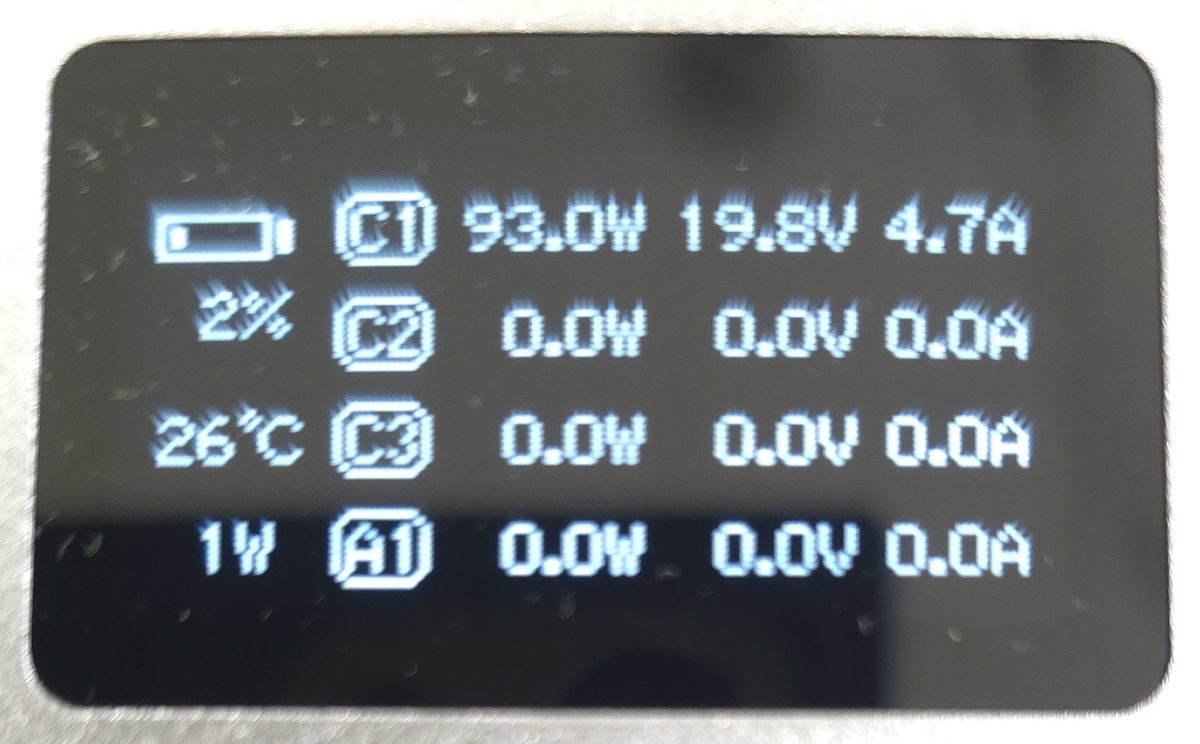
It arrived in need of a charge. You can see that it only had 2% available and was taking 93W from my Ugreen Nexode 300W GaN Desktop Charger. Using the 100W port, it took just over an hour to fully charge the Flash Pro Plus. Nice.
The included carry case can hold the power bank. It also has a mesh pocket to hold a cable or two.
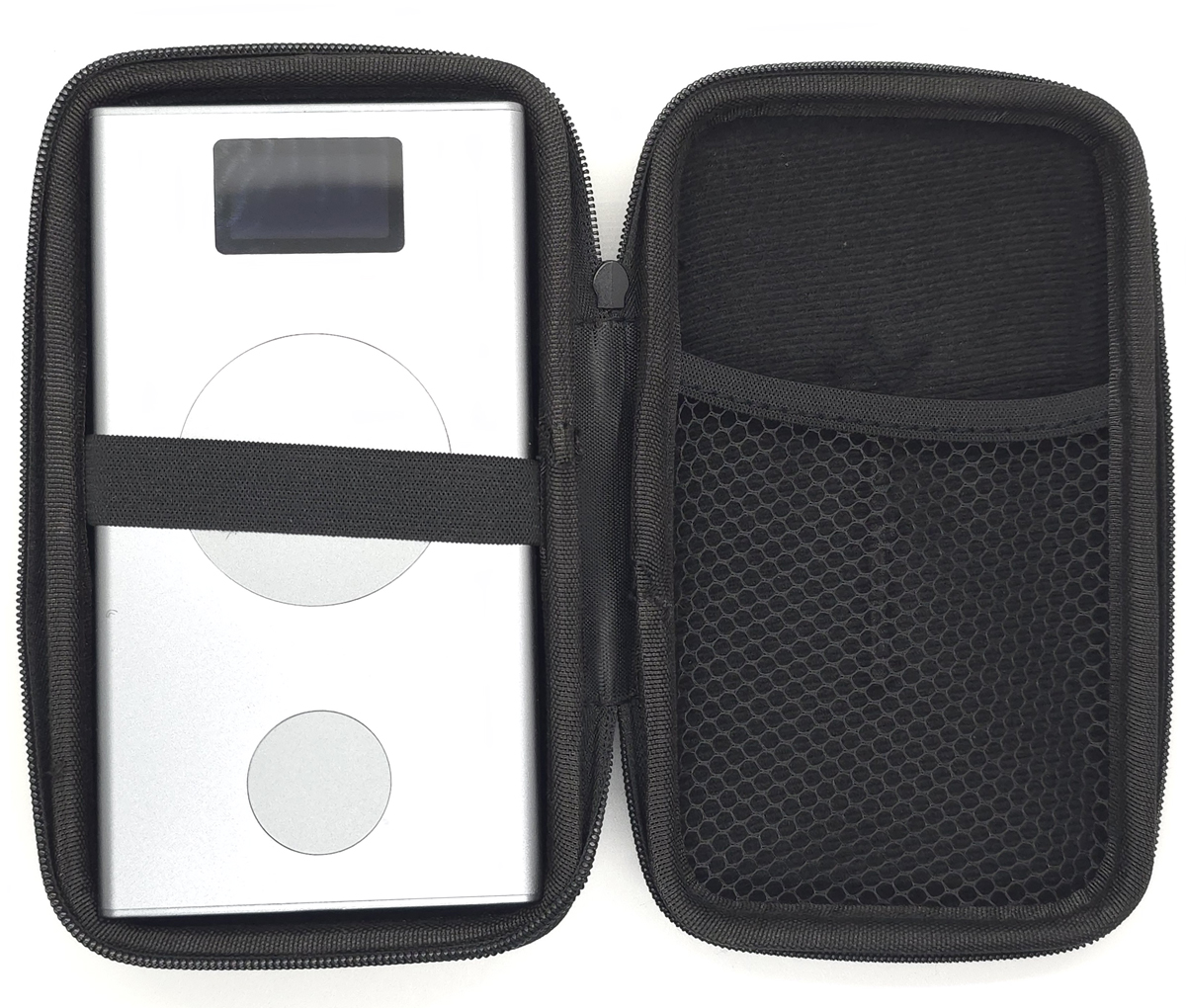
Assembly, Installation, Setup
The only setup required is to charge the power bank so it can then charge your devices.
Performance
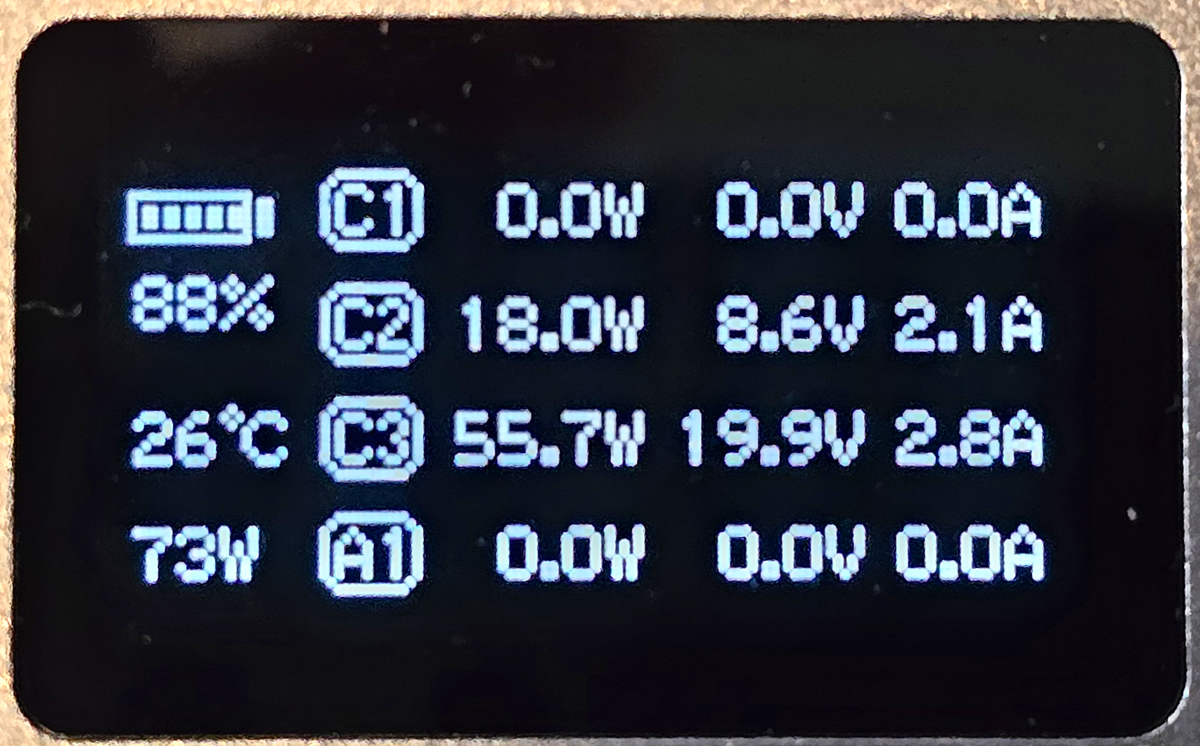
Performance is pretty simple – it works. In the photo above, my laptop was sucking 55.7 Watts from C3 while my phone was sipping 18.0 Watts from C2. The display showed that there was still 88% life left in the pack, it was maintaining 26C or just under 79F – pretty cool given the power it was putting out. The display showed that it was delivering 73 Watts – perhaps a rounding error since 55.7 + 18 = 73.7, but that’s a minor quibble. I appreciate the excellent information provided. I especially like the charge level as I think that provides better information than a 4-LED charge indicator.
I’m not an Apple guy, so I can’t address the Apple specifics of this battery pack, like the Apple Watch wireless pad. The documentation does say that it won’t work with Samsung watches as the coil design is different. I have an Android phone with a MagSafe case on it so I figured that the wireless pad would charge my phone. I moved it around and the magnets snapped it into place. And…it did nothing. No charging. So it doesn’t work on non-Apple devices. Or did I miss something?
I did something I am typically morally opposed to doing – I read the manual. It turns out that the wireless charging pads are disabled by default. I held the button down for three seconds as directed and the “W” on the power delivery total in the lower left started flashing, indicating that the wireless was turned on. I popped my phone on again, and it immediately started consuming 10 Watts of wireless charging goodness. It makes sense – you don’t want a charged-up wireless pad randomly trying to deliver power to whatever it might snuggle up next to in your bag. Pressing the button for another three seconds shuts off the pads and the “W” stops flashing. Lesson learned – read the manual.
The Flash Pro Plus had no problem delivering power to two laptops and a cell phone via USB while simultaneously wireless charging another cell phone. I still had a USB port to spare. It stayed remarkably cool while delivering all that power thanks to its graphene design.
I tested charging my Samsung Galaxy S24 Ultra. Here’s what I saw:
- C1 100W: Super fast charging at 20.4W, 9.3V, 2.2A
- C2 20W: Fast charging at 17.8W, 9.4V, 2A
- C3 60W: Super fast charging 2.0 at 18.8W, 9.4V, 2A
- A1 50W: Fast charging, 14.5W, 9.1V, 1.6A
- Wireless: Fast wireless charging, 9W
One thing to note is that if you are a MacBook person, this power bank can only put out a maximum of 100W from a single port so you can’t get the 140W you want to fast-charge. Still, it’s more than you can get from other power banks.
What I like about the Chargeasap Flash Pro Plus power bank
- Bodacious power
- Relatively small and light
- Nice variety of output ports and power
- The display provides a wealth of information
- Wireless charging can be easily enabled/disabled
- It remains cool when in use
- Recharges quickly
- Airline-friendly
What needs to be improved?
- Put in a big reminder for stupid people like me to read the manual
Final thoughts
The Flash Pro Plus power pack from Chargeasap has a lot to like and essentially nothing to dislike. It is well-made, packs a lot of power, offers flexible power delivery options, and can recharge just about anything you can throw at it. It does all this in an easily packable package. Add on the excellent information display, wireless charging options, and pass-through charging and you have a compelling do-it-all battery pack for general or travel use.
Price: $289
Where to buy: Chargeasap
Source: The sample of this product was provided for free by Chargeasap. Chargeasap did not have a final say on the review and did not preview the review before it was published.



Gadgeteer Comment Policy - Please read before commenting
Good review, but it would have been nice if you had included the dimensions & weight – or at least a photo that showed it relative to a well known object – so one can get an idea of how much room it would take up.
Thomas,
If you look in the review for the heading Tech Specs and follow the instructions to Click to Expand, you’ll see dimensions, weight, capacity, output levels and so on.
Garry
Thanks – didn’t see the tiny little expansion triangle 🙂